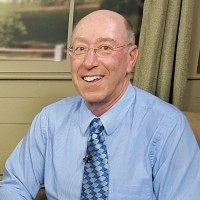
Some big news today from The Bedford Citizen, one of the first digital nonprofit community news sites in Massachusetts and a project I’ve been tracking for the past dozen years: Wayne Braverman, the Citizen’s managing editor, is stepping down.
This follows the death of reporter Mike Rosenberg in late February, and it leaves the Citizen with vacancies in its two key news positions, at least for the moment. “We have a strong team still in place and a plan for coverage during this transition,” said board president Elizabeth Hacala in an email that was sent to email subscribers earlier today.
Hacala added that the Citizen is in the process of hiring a community reporter to replace Rosenberg, a legendary figure in Bedford who died at 72 while covering a high school basketball game. Mike was one of the people Ellen Clegg and I wrote about in our book, “What Works in Community News.”
Braverman became managing editor in October 2022, replacing co-founder Julie McCay Turner. He and executive director Teri Morrow appeared on our podcast a little over a year ago. Hacala’s full message is as follows:
Thank you for being a part of The Bedford Citizen community. I wanted to let you know about a change in our team that will be announced later today.
Wayne Braverman is wrapping up his time with The Citizen. We are in the process of updating the Managing Editor role and beginning the search for a new editor.
We have had an exciting response to our Community Reporter posting and look forward to having someone on board soon. In the interim, many members of the community have stepped forward to help us keep the presses running so to speak. This takes us back to our roots when volunteer writers created most of our stories.
We have a strong team still in place and a plan for coverage during this transition. Since you are a loyal reader of The Citizen, I wanted to make sure you heard the news directly from me before it is published on the website and social media later today.
Thank you again for being a part of The Citizen. Your support is critical to all we do. We are, as always, committed to being your local, non-profit, independent news source.
Update: Braverman has written a heartfelt farewell, saying, “Leaving The Citizen at this time is a good thing while I am healthy and still have the energy to engage in meaningful opportunities in the remaining time that I have on this planet. I don’t want to leave this world feeling like I didn’t do all I could to help make this a better place, especially in the era we find ourselves today.”
Correction: This post has been revised to eliminate some confusing and incorrect language I had inserted.




